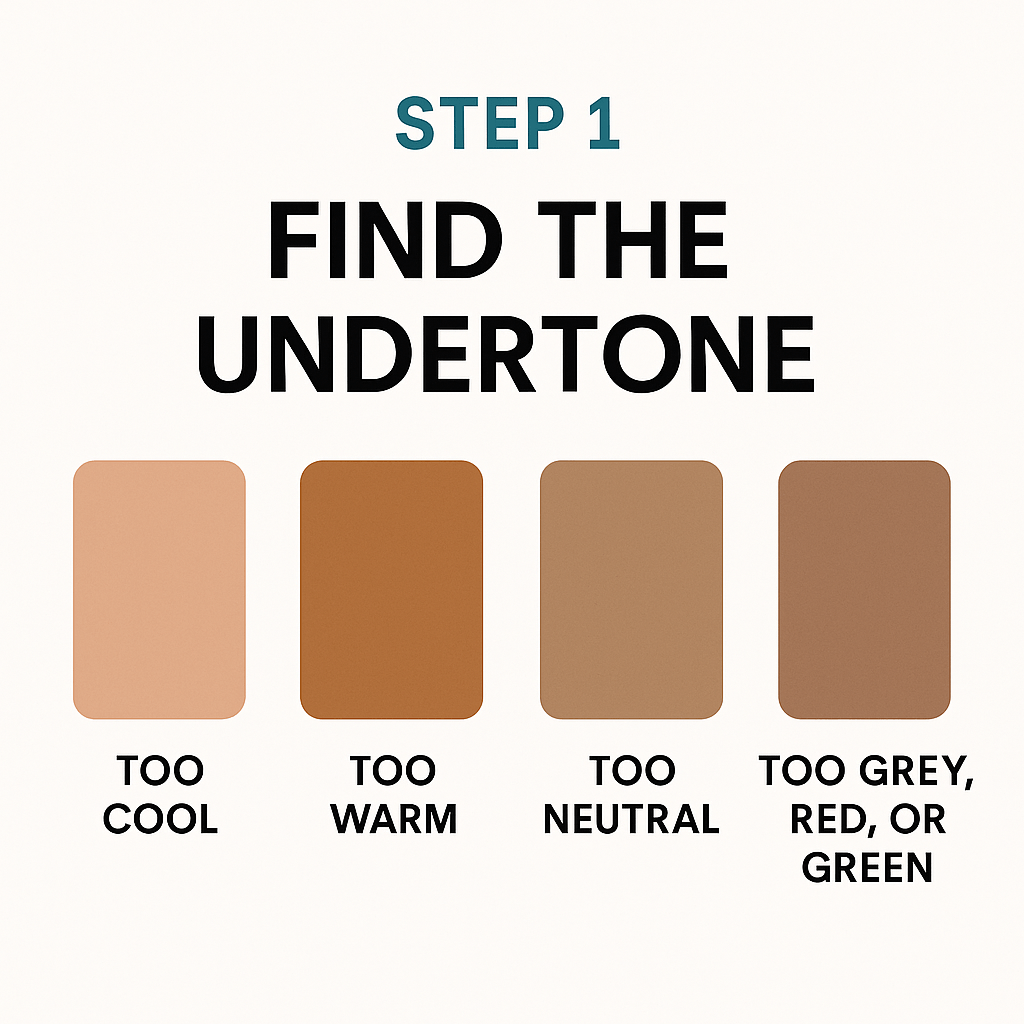How to Correct Foundation Undertones
How to Correct Foundation Undertones
There’s a lot of confusion around undertones...
Makeup artists are told to look at veins, compare gold vs silver, match chest to neck, avoid looking orange, avoid looking grey…
Next thing, you’re spiraling on YouTube trying to figure out if you’re olive-neutral-golden-cool.
Let’s simplify things.
Here’s how to correct the undertone of your foundation or concealer using a method that actually works... And takes less time than blending your contour. We call it:
Find. Flip. Fix.

Before you fix anything, you have to know what you’re working with. Is the product:
Too cool (blue, pink, ashy)
Too warm (yellow, orange)
Too neutral?
Too grey, red, or even green-looking?
You’re not guessing here. You’re identifying.
The easiest way? Use a tool like the MUA Color Wheel.
It helps you compare undertones visually, and spot what the product is leaning toward.
It removes all the guesswork.
No more “I think this looks okay…” Now you know.

Once you find what’s off, flip it.
This is where color theory comes in... But don’t worry, we’re not turning this into art class.
Just remember:
Opposites cancel each other. Neighbors shift tone.
If it’s too orange, flip it by adding blue (complementary color)
If it’s too cool, warm it up with peach or yellow-orange
If it’s too grey, revive it with warm peach
If it’s too red, balance with olive or green
If it’s too yellow, a touch of violet helps cool it down
You’re either neutralizing (using opposites) or shifting the tone (using neighbors on the color wheel).
Again, tools like the MUA STIC show this visually. Each undertone with its opposite right behind it. Just flip the strip and you’ll see exactly what corrects what.

Now that you’ve identified the undertone and flipped it, you fix it by adjusting your product directly.
You can:
Mix in a pigment adjuster or concealer with the correct tone
Layer a corrector before foundation (like peach or olive, depending on your case)
Add a drop of warmth or coolness into your foundation using a mixing medium or cream
Start small. Mix on a palette. Test. Then apply.
Once you get used to it, this step becomes easier.
It’s not about throwing away products... it’s about understanding how to correct what you already have.
The Best Part?
Once you understand these three steps, you can correct any foundation or concealer.
You don’t have to keep buying new shades. You don’t have to panic when something looks off.
You’ll just know:
What undertone it has.
What it needs.
How to fix it.
TL;DR (too long, didn’t read? here’s your cheat code):



© Created with systeme.io



